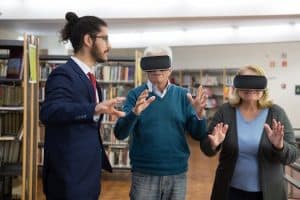Educational Access: Removing Barriers
Access to education is a fundamental human right that should be available to all individuals, regardless of their socioeconomic status or background. Unfortunately, there are numerous barriers that hinder many individuals from receiving a quality education. These barriers can include financial constraints, lack of resources, and discrimination. As a result, many individuals are deprived of the opportunity to pursue their academic dreams and reach their full potential. However, there has been a growing global effort to remove these barriers and provide equal educational access to all individuals. In this article, we will explore the concept of educational access and the efforts being made to eliminate barriers that stand in the way of individuals’ right to education.
Understanding Educational Access
Before we delve into the topic of removing barriers to educational access, it is important to understand what educational access means. Educational access refers to the ability of individuals to have equal opportunities to attain education regardless of economic, social, or geographical factors. It encompasses the right to enroll, attend, and participate in educational activities without any form of discrimination. Access to education is not just about having access to physical facilities, but it also includes factors such as language, cultural barriers, and gender equality.
Barriers to Educational Access
There are various barriers that hinder individuals from having equal access to education. One of the most significant barriers is financial constraints. Many individuals, especially those from low-income families, cannot afford the cost of education. This often results in parents choosing to prioritize basic needs over education for their children. Additionally, the ever-increasing cost of tuition fees, transportation, and study materials make it challenging for individuals to access education.
Lack of resources is another significant barrier that affects the quality of education individuals receive. Inadequate infrastructure, such as lack of classrooms or proper learning materials, hinders effective learning. This is particularly true in developing countries where resources are limited. Students who lack access to the necessary resources often face challenges in keeping up with their studies, leading to high dropout rates.
Discrimination is also a pervasive barrier when it comes to education access. Individuals from minority groups may face discrimination in the form of unequal treatment, harassment, or exclusion, which can prevent them from accessing education. Discrimination can be based on factors such as race, ethnicity, gender, religion, or disability. This hinders individuals from developing their full potential and perpetuates inequality in education.
Efforts to Remove Barriers to Educational Access
Despite the various challenges to educational access, there have been continuous efforts to remove these barriers and provide equal opportunities for education. The United Nations’ Sustainable Development Goals (SDGs) aim to ensure inclusive and equitable quality education for all individuals by 2030. This includes eliminating financial barriers, providing necessary resources, and promoting equity and inclusion.
In many countries, there are initiatives to address financial constraints by providing scholarships or financial aids to individuals from low-income families. Governments have also introduced policies to ensure that basic education is free for all children. In some cases, non-governmental organizations have partnered with schools to provide necessary resources such as textbooks, school supplies, and technology to help bridge the resource gap.
Furthermore, efforts have been made to promote gender equality in education. This includes initiatives such as providing separate toilets for girls, which enables them to attend school even during menstruation. There have also been campaigns to encourage parents to enroll girls in school, as they are often the ones who are excluded from education due to cultural norms.
The Importance of Removing Barriers to Educational Access
The benefits of removing barriers to educational access are vast and far-reaching. Equal access to education promotes social inclusion, reduces poverty, and leads to economic growth. It equips individuals with the skills and knowledge needed to succeed in their personal and professional lives. When barriers to educational access are eliminated, it promotes diversity, critical thinking, and fosters tolerance and empathy among individuals from different backgrounds.
In Conclusion
Equal access to education is crucial in creating a just and equitable society. Unfortunately, many individuals still face barriers that hinder their access to education. However, through global efforts and initiatives, progress is being made to remove these barriers and provide individuals with equal opportunities to pursue their academic dreams. It is our responsibility to continue advocating for accessible and inclusive education for all individuals. As Nelson Mandela famously said, “Education is the most powerful weapon which you can use to change the world.” Let us work together to remove barriers and make education accessible to all.










